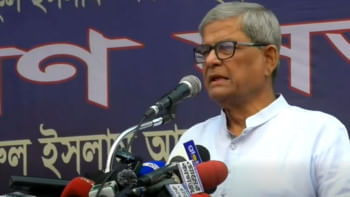A dangerous place for a child

Balukhali camp: One year after the newly-arrived refugees began clearing scrubland and setting up primitive plastic and bamboo shelters, the camps appear more settled and organized. New roads and other infrastructure have been installed. Paths roughly paved with red brick snake through bustling markets, while steep stairways of bamboo and sandbags make crossing the hills on which the camps are mostly built somewhat less hazardous. Street lamps powered by solar panels are increasingly common.
Some things haven't changed, however. The huge numbers of children are as unmissable as the jostling queues of people awaiting handouts of food and supplies. With cash-for-work schemes now providing a modest boost to the camp economy, small businesses have set up shop, offering everything from vegetables, shoes and toys to haircuts and even jewellery.
Making this often chaotic and largely lawless environment safer for children has been a top priority for UNICEF and its partners from the outset. For children and their parents, the 136 child-friendly spaces set up throughout the camps have played an important part in bringing normalcy to lives that were so brutally uprooted.
“They provided a secure space where children could be children again, and allowed parents to concentrate on other issues in their lives,” says UNICEF's Child Protection Programme Manager in Cox's Bazar, William Kollie. “The spaces are still playing that role today, for older children and young ones alike.”
Twelve months on, providing psychosocial support to children still struggling with the mental consequences of the horror they went through in Myanmar remains as vital as ever. At the same time, other protection concerns have grown.

 For all latest news, follow The Daily Star's Google News channel.
For all latest news, follow The Daily Star's Google News channel. 



Comments